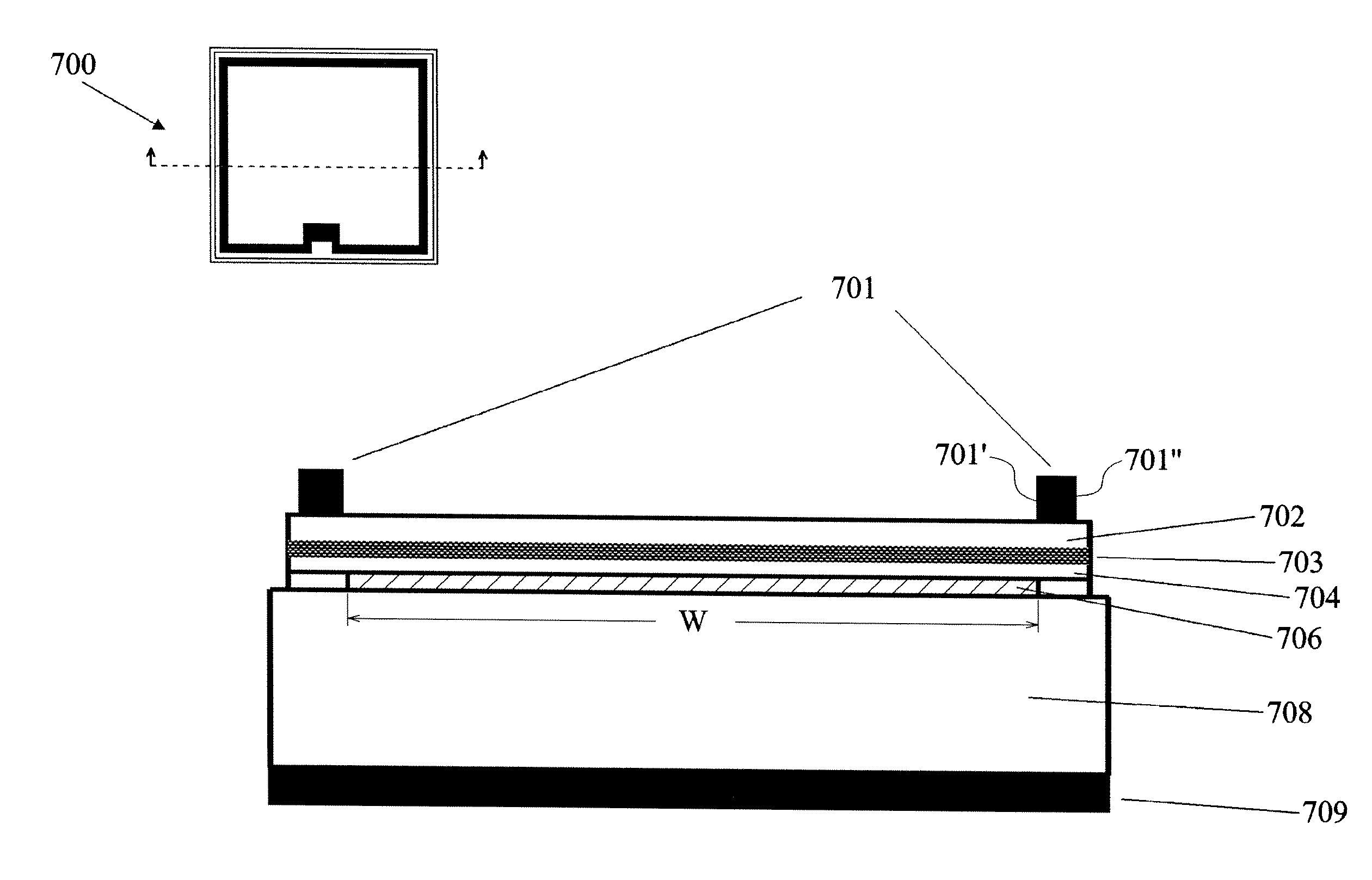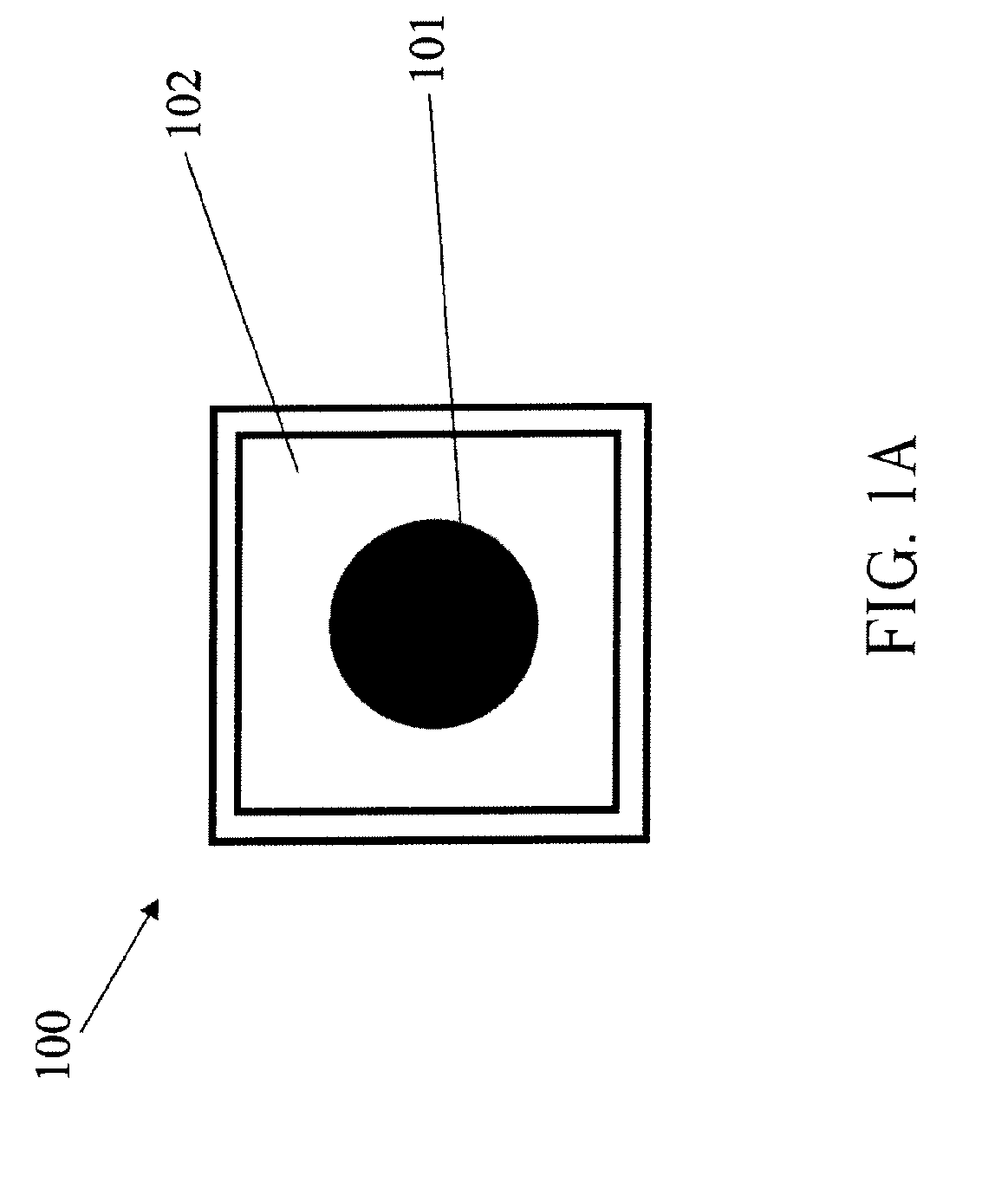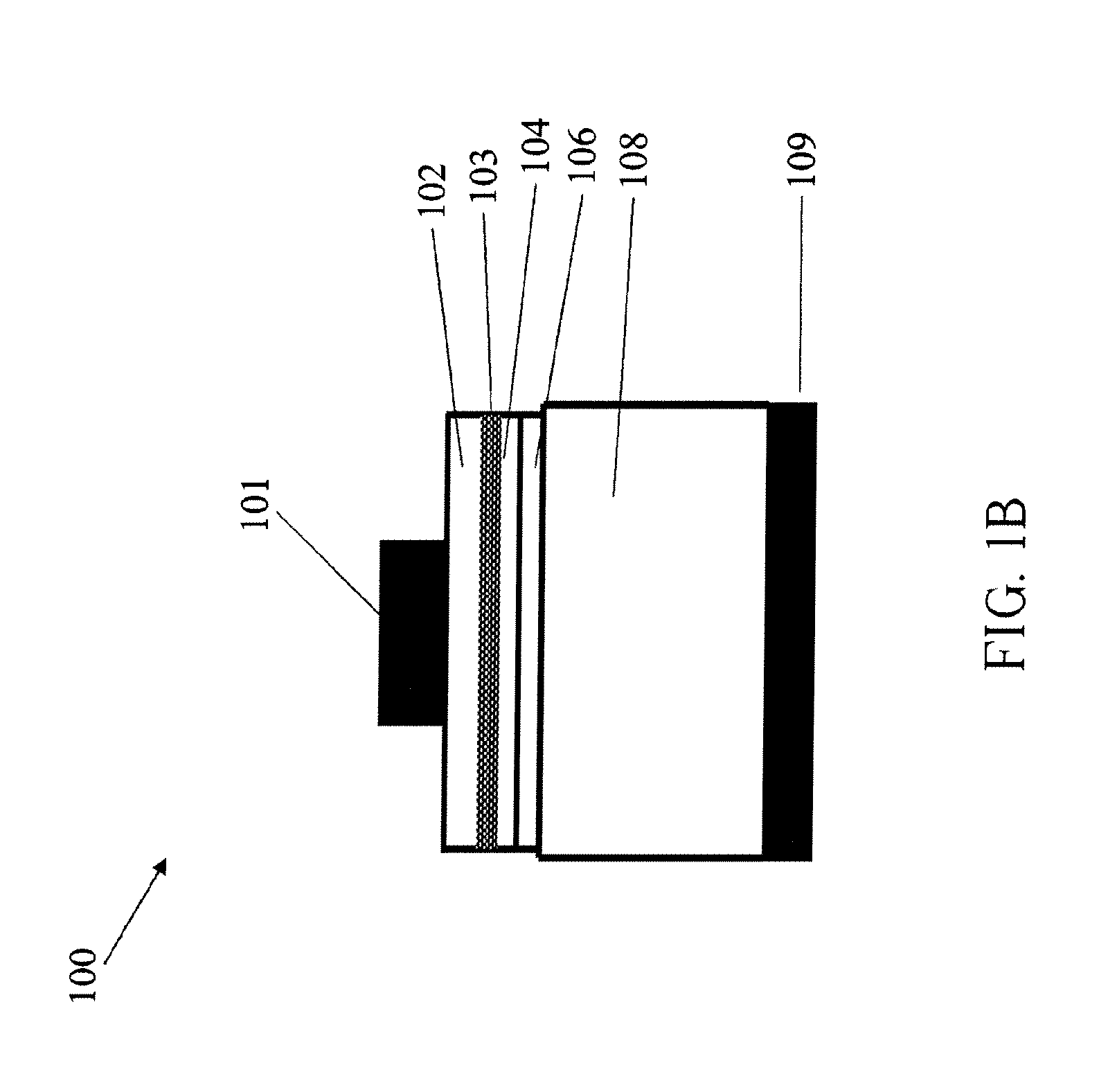Light emitting diode device
a technology of light-emitting diodes and led arrays, which is applied in the direction of semiconductor devices, basic electric elements, electrical appliances, etc., can solve the problems of less likely to achieve stable reliability, higher cost of manufacturing led array devices, and complicated led devices including led arrays. achieve the effect of reducing the light-absorption of metal electrodes, increasing the brightness, efficiency and service life of led devices
- Summary
- Abstract
- Description
- Claims
- Application Information
AI Technical Summary
Benefits of technology
Problems solved by technology
Method used
Image
Examples
Embodiment Construction
[0037]The preferred embodiments of the invention are described hereinafter, including various embodiments of vertical LED devices according to the invention, in which the current spreading performance of a semiconductor layer and the light-absorption property of a metal electrode have been modified, thereby achieving better brightness, efficiency and service life in comparison with conventional LED devices.
[0038]FIG. 4 shows a top view of a large-size vertical GaN-based (gallium nitride) LED device 300 according to one embodiment of the invention. FIG. 5 shows both of a top view and a cross-sectional view of the LED device 300 shown in FIG. 4. FIG. 6 illustrates a three dimensional view of the LED device 300 shown in FIG. 4. In this embodiment, the size of the n-type (second conductivity type) semiconductor layer 302 is 1 mm2. The large-size vertical LED device 300 of the invention includes a first electrode 309, a conductive base layer 308 formed on the first electrode 309, a refle...
PUM
 Login to View More
Login to View More Abstract
Description
Claims
Application Information
 Login to View More
Login to View More - R&D
- Intellectual Property
- Life Sciences
- Materials
- Tech Scout
- Unparalleled Data Quality
- Higher Quality Content
- 60% Fewer Hallucinations
Browse by: Latest US Patents, China's latest patents, Technical Efficacy Thesaurus, Application Domain, Technology Topic, Popular Technical Reports.
© 2025 PatSnap. All rights reserved.Legal|Privacy policy|Modern Slavery Act Transparency Statement|Sitemap|About US| Contact US: help@patsnap.com



